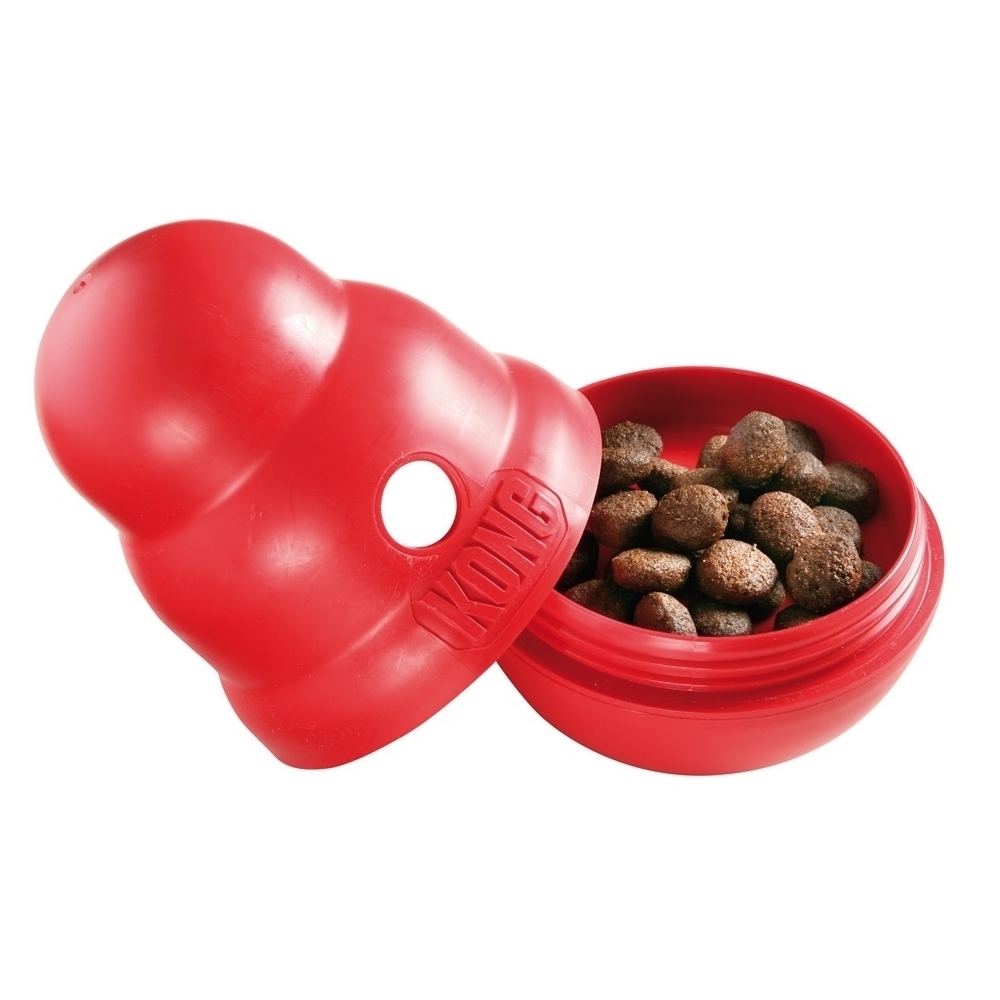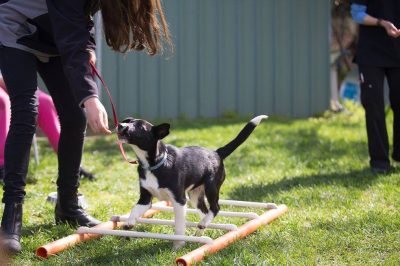‘Velcro’ dogs as they can be known, always want to be super close, even touching their owner in case you go away. This is a joy when you are with them, however some dogs can’t be left without getting upset and will bark continuously or destroy property (or themselves) in an effort to find you.

Separation distress is a condition that results from anxiety. Other common anxious behaviours in dogs include fear of noises, situations or unfamiliar people or dogs. Anxiety is a fear of perceived threats. We know they are safe at home without us, however your dog may be completely unable to cope without the company of family members. Much of the time, it’s human rather than canine company that they crave so getting another dog is rarely the answer.
Separation distress occurs in up to 15% of dogs and studies have shown that up to 80% of dogs have an increase in their stress hormones when alone. The desperate ‘nuisance’ barking or expensive destruction of property account for many pets being relinquished to shelters.
Why do some dogs suffer separation distress?
Various theories have been put forward for the dysfunctional attachment to owners or the fear of being left alone. Genetics can play a part, however the most powerful predictor is separation from an attachment figure early in life. Pups can readily transfer their attachment from their dam to their new human owner’s care, however, they need attention when young in order to grow up independent. The risk is greater in pups of single owners as they are alone more. There is an increased risk when owners are anxious when leaving the pup and make a fuss when they return. Dogs with a shelter background are more at risk as they have often lost confidence in attachment figures.
When does separation distress start?
The onset usually occurs before two years of age. It can follow the loss of a human or animal companion, moving house, a change in the owners schedule or a stay away from home in boarding or hospital. It can also occur along with other anxiety based behaviours, like noise or thunderstorm fear.
What are the signs of separation distress?
These signs only occur with separation, however some dogs cope with predictable regular departures but panic with unexpected departures. Most dogs show signs within 10 minutes of departure.
Signs include:
- Destruction of property. This is a desperate attempt to escape the barriers to finding you. Most often the damage will be around windows, blinds or doors. Other dogs will chew anywhere in the house in an attempt to cope with anxiety.
- Barking and whining are also attempt to communicate with you.
- Urination with or without defecation in the house.
- Increased grooming that causes hairless, ulcerated areas on the skin.
- Pacing and shadowing the owner before a departure and over-exuberant greetings
- Severe fear signs include dilated pupils, salivation, vomiting and inability to eat when alone.
How do I know this is anxiety related?
Destructive behaviour can also occur with normal puppy chewing or exploratory behaviour, particularly if the pup’s needs for mental and physical stimulation are not met. Some dogs destroy barriers when they are frustrated, for example they see a rabbit over the fence that they want to chase. Others bark at passersby or bark as social communication to attract attention. Dogs with separation distress show anxious body language that occurs when they are alone. Video footage can be helpful for diagnosis.
What can I do to help?
We recommend a thorough behaviour assessment to develop a treatment plan for your dog.
Attempts to desensitize dogs to pre-departure cues by scrambling or avoiding the usual cues eg. donning work clothing, picking up of keys, rarely works as the dog quickly learns the new cues.
Training to gradually increase the length of the departure is generally tedious and unsuccessful.
It can be helpful to initially stop fueling the fear by not leaving your pet alone all day. Consider options for day care.
This is an example of a protocol to help your pet can learn to cope alone:
Before leaving:
- Take your dog for lots of exercise. This could be in excess of an hour in the morning for some dogs to enable them to become tired and fulfil their physical and mental needs.
- Hold the morning meal until you leave. Use a non-performance ration.
- Act happy as you leave rather than communicate worry.
- Use the ‘wait’ command before feeding.
- Present the morning meal, which is half the dog’s daily ration in multiple food release toys or puzzles eg. Kongs, treat balls, wobblers, frozen treats or hide the food as you leave.
- Make your leaving into party time!

When you are away:
- Leave your pet with an optimal environment.
- Appeal to your dog’s sense of taste. This will be different for every dog. Some love dried liver powder mixed with the food.
- Appeal to their sense of smell to provide interest. The smell could be associated with a chew toy eg vanilla, anise or an animal odour.
- Appeal to their sense of vision. For example, provide a bird feeder to watch, access to a view, dog TV, a dog door to access inside and out.
- Appeal to their sense of hearing. Play a CD going of sounds your dog may like eg “Through a Dogs ear”.
- Appeal to their sense of touch. Provide a comfortable resting place. Put some of your unwashed clothing in their bed. Crates that represent a safe refuge can be provided, however leave the door open.
When you return:
- Your return must be very low key.
- Pick up all the uneaten food and items that you left at departure. The party is over.
- Wait an hour before feeding the evening meal.
Teach independence:
- Ignore demanding attention seeking behaviour.
- When you start to ignore attention seeking behaviours, the dog may increase their attempt to get your attention. Take care not to reward this heightened behaviour.
- Remember that saying ‘No’, speaking to your dog, looking at them or pushing them down represents attention and rewards the behaviour.
- Reward calm and independent behaviour.
- Foster clear and consistent routines where your dog sits to receive good things in life.
- If they sleep on your bed, teach them to sleep in their own bed near to yours. Use a tether initially if they keep jumping up with you.
- Provide them with lots of exercise, off leash where possible.
- Make theirs an interesting life. Are they suitable for agility? Do they enjoy training or tricks?

Can medication help?
One of the most important goals in behaviour therapy is to reduce the underlying anxiety so learning can begin. Some anxious dogs are unable to learn new strategies to cope without medication as they have a physical illness. Whilst medication usually does not work without avoidance or fear triggers and the use of behaviour modification, it is often very helpful to reduce anxiety to a level that allows a starting point for retraining. Background and situational medications can play a large part in the management of separation anxiety and the vet will discuss these during a behaviour consultation.
